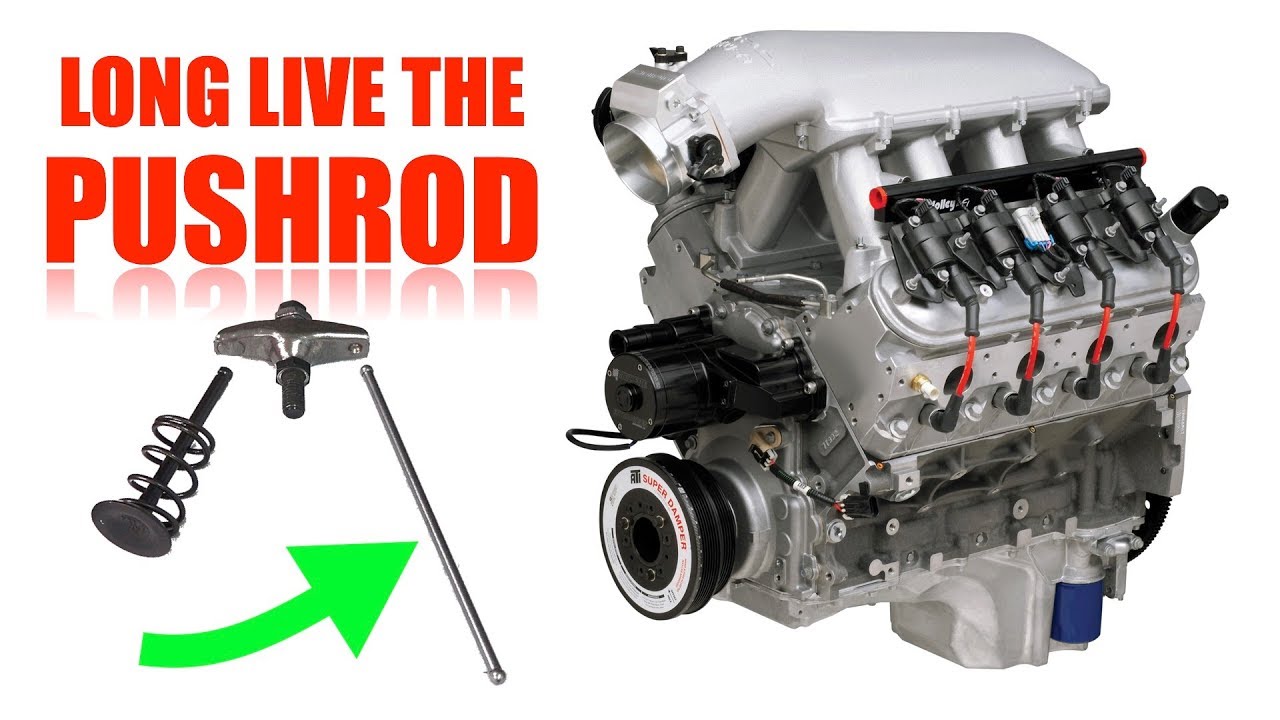Why Does the Pushrod Engine Still Exist So Many Years Later?

If you could think of a list of maybe four or five things that you have purchased and touch the most on a regular basis, I can almost guarantee you that the vast majority of those things are part of an environment that is quickly evolving. If your cell phone falls on that list, it’s definitely something that is changing every day and with new models coming out every couple of months, people are always buying new ones, not to mention the constant fixes and software updates for your current device.
The clothes you wear are constantly changing as well, whether it be due to different fabric technology, allowing your clothes to be more efficient or something that keeps up with the latest style.
Lastly, and arguably the most quickly changing of them all is the automobile that you find yourself driving. From year-to-year, manufacturers are constantly enhancing or at least trying to enhance the vehicles that they put into the public’s hands as it’s a fierce market where no brand can take a break.
With that in mind, you would think that engine technology that was first cited as being used all the way back in 1896 would be dead by now, especially if it’s an overall architecture and not something like an accessory. In most cases, pretty much everything that was in use that long ago is pretty much laying dormant in a graveyard or being looked at as nothing more than historical, however, when you take a look at the overhead valve configuration of internal combustion engines, also known as pushrod engines, they are still very much alive and being used in some of the most well put together vehicles on the market today.
If you follow along down in the video below, the Engineering Explained YouTube channel will give you the rundown of why exactly the host thinks that this kind of tech is still in use today and why it hasn’t been widely replaced by all of the mainstream automakers just yet. After soaking in this information, be sure to tell us how long you think pushrod engines are going to stick around. Do you think they will be around until the dying day of internal combustion applications?
https://www.facebook.com/EngineeringExplained/videos/2176833315912078/?__xts__%5B0%5D=68.ARCjbHrDAti_NSw-CNzii7T9dDnihvbFVB5D5Jd6QPvpcxnnzdRmTpvUeaW1jk1Vzj5qEe-uJWvFjMP06NIABK6iO-YuTjYFK4hpWr1DnbpuhQgB1ncspuFWPFqVh0eHv03W-6o2dThu3F_mxdhTAQFNH4lS5PNHnvTl5mwTIPhe62B-BEpeqaH6Kg60xBA5790wOJcGk0xn_-bJ3d56xhmYjXkzt4bFAlap_rfI3RV4Tc5DJc16nHx8qhbs8HJrhjTeqGUBcCTD9H1eOEbIr-3JDeSicH23AQfAba8GEf2x145rOijOrsFTX_-Oj87aaeKoT9MP-LQTmyMza0oE9h0Qhswm2z3JfA58aBUJAvBo93wSE0zBc_MXpE5H&__tn__=H-R

